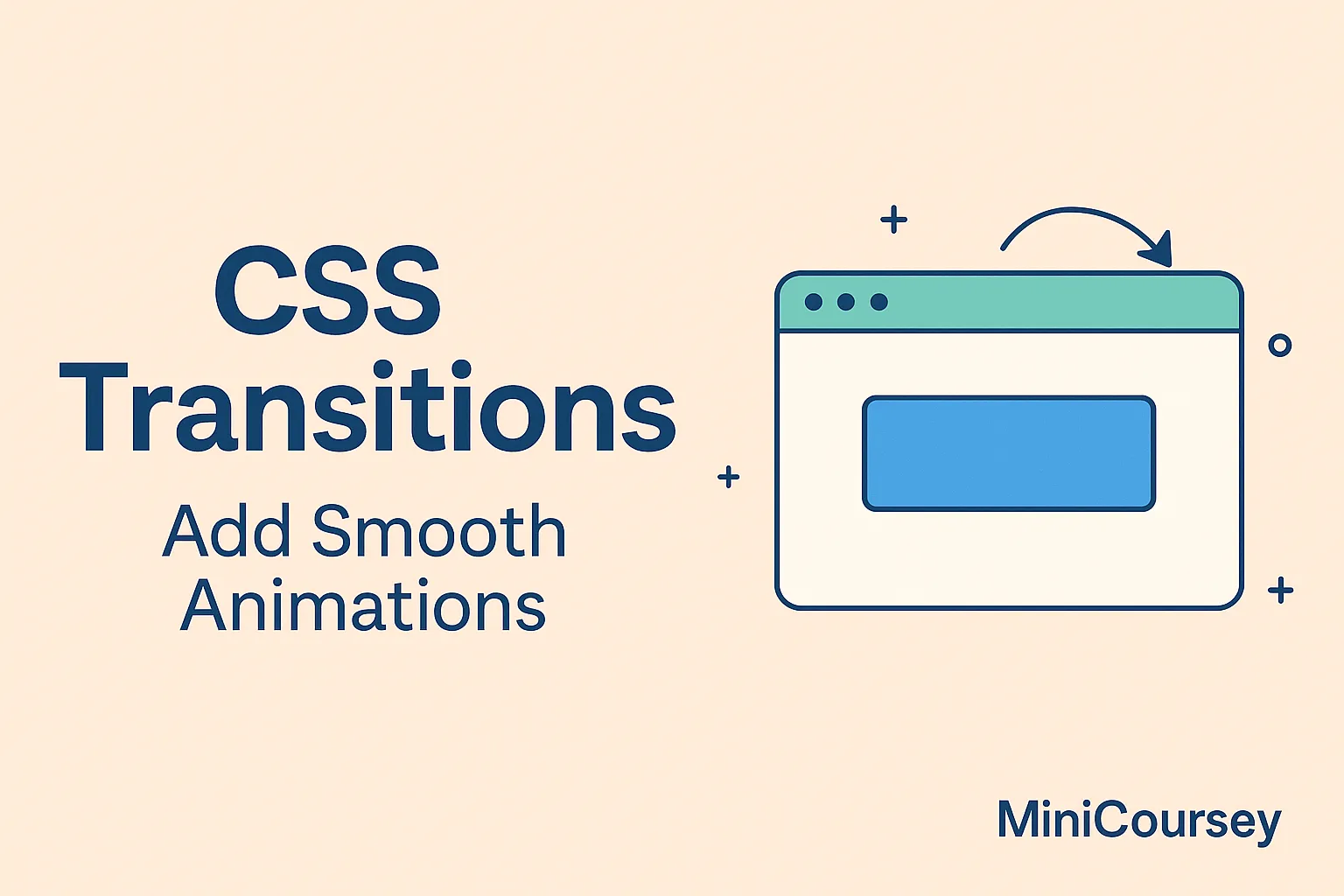Want to make your website feel more modern and engaging? CSS Transitions are the easiest way to add smooth animations to your pages without using JavaScript. With just a few lines of code, you can animate color changes, size, position, or even opacity when a user interacts with elements like buttons, links, or images. In this MiniCoursey quick guide, you’ll learn how CSS Transitions work and how to apply them step by step to create a more dynamic, polished user experience.
What are CSS Transitions?
CSS Transitions allow property changes in CSS values to occur smoothly over a specified duration, rather than instantly. For example, instead of a button background snapping from blue to green when you hover, it fades smoothly between the colors, making the interaction feel more natural and user-friendly.
Basic Transition Syntax
To create a transition, you define which properties to animate and how long the transition should take. You can also adjust the timing function and delay if needed.
button {
background: #007acc;
color: #fff;
padding: 12px 24px;
border: none;
transition: background 0.3s ease;
}
button:hover {
background: #005fa3;
cursor: pointer;
}
Multiple Properties
You can animate multiple properties at once. For example, you can fade and scale a box on hover.
.box {
background: #f0f0f0;
padding: 40px;
transition: background 0.5s ease, transform 0.5s ease;
}
.box:hover {
background: #ddd;
transform: scale(1.05);
}
💡 Pro Tip: Combine
transitionwith:hoverand:focusfor better accessibility and smoother effects on different devices.
⚠️ Common Mistake: Remember: only animatable CSS properties can be transitioned — not all CSS properties support transitions.
FAQ
Q: Do CSS Transitions work on all browsers?
A: Yes — modern browsers fully support them, and they perform well even on mobile.
Q: What’s the difference between Transitions and Animations?
A: Transitions animate changes triggered by user actions or CSS changes, while Animations can run automatically in loops or keyframes.
Related Link
👉 Check out previous: CSS Pseudo-Classes — Add Interactive Styles Easily
Where to Learn More
Try adding CSS Transitions to your next project. Combine them with hover effects, focus states, or even form inputs for smooth feedback. For more, check out MDN’s Transitions documentation and experiment with transition-timing-function for different easing effects.
Conclusion
Congrats — now you know how to use CSS Transitions to make your web pages feel smooth and professional. These tiny touches help your website stand out and give users a better experience. Start experimenting with your buttons, images, and sections today!
✨ Bookmark MiniCoursey for more quick & free mini courses!

